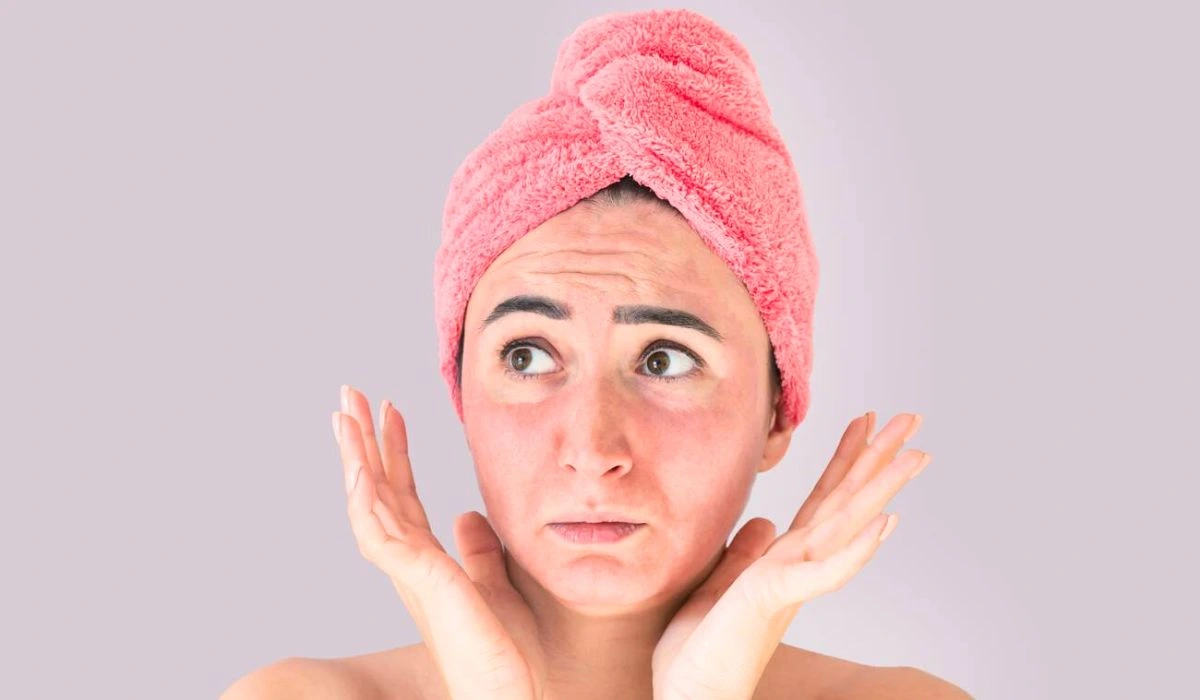Redness of the skin on the face is widespread and may develop due to diverse reasons like allergies, excessive sun exposure, rosacea, or sensitive skin. It may make such people uncomfortable and embarrassed. It’s important to comprehend what makes one’s skin red, how it can be prevented or managed, and treatments for such cases to keep the skin radiant and healthy.
Skin Redness On The Face: Symptoms

- Persistent Redness: Skin redness presents itself first as a continuous redness on the face, which looks like a sunburn. However, it can come along with a sense of warmth or pins-and-needless sensibility. Patches of redness cover the whole face.
- Itching Or Stinging Sensation: It may result in itching or stinging feeling on the skin. It may become hard to focus and do some normal tasks due to this discomfort.
- Dry, Flaky Skin: facial redness is usually accompanied by dryness and flaking. This can result in its surface becoming hard or dry, thereby increasing the chances of irritation and additional swelling.
- Visible Blood Vessels: telangiectasis is a condition where visible blood vessels emerge on the skin surface of the facial area in cases of skin redness. They often stand out around the face, close to the nostrils and cheeks, or at the chin.
- Swelling And Acne-Like Bumps: It may cause facial swelling and pimple-like bumps. These bumps could be pus-filled, leading to pain or discomfort.
Also Check: How To Heal A Sprained Ankle Overnight With Quick Recover Remedies?
Treatment Options For Skin Redness On The Face
- Topical Creams Or Ointments: Some over-the-counter or prescription-strength creams and lotions, including ingredients such as hydrocortisone, aloe vera, and chamomile, may bring some relief to the redness of the skin. Such products usually have comforting and anti-inflammatory qualities that calm the inflamed skin.
- Moisturize Regularly: The use of a gentle, hydrating moisturizer twice a day can help reduce the dryness related to skin redness. To reduce the possibility of pore-clogging, opt for non-comedogenic products, that do not contain any fragrances.
- Use Sunscreen: It is of utmost importance to protect one’s face from damaging ultraviolet (UV) rays, which result in redness that can come about due to sunburn or photodermatitis. Use a broad-spectrum sunscreen with high SPF and apply it liberally for 15 minutes before sun exposure.
- Avoid Triggers: Knowing how to prevent trigger factors, which could worsen facial reddishness, matters here. These are typically called alcohol, spiced foods, drastic temperature changes, overexposure to sunlight, several cosmetics, and anxiety. Tracking potential triggers through a journal may help manage flare-ups or prevent them altogether.
- Cold Compresses: Using a cold compress can temporarily reduce the redness of the skin due to its anti-inflammatory action in soothing the skin. Place wet wrap containing an ice cube on the damaged areas, holding it there for about several minutes.
Skin Redness On The Face: Precautions To Take
- Gentle Skincare Routine: Use gentle care for your skin when cleaning it; avoid aggressive exfoliates; use mild and scent-free soap or cleanser; pat instead of rub your skin dry after washing; and dry carefully with a soft towel. The use of specially formulated skincare products is recommended.
- Hydrate The Skin: Drinking an adequate amount of water throughout the day helps maintain skin hydration and overall health. Hydrated skin is less prone to dryness, itching, and redness.
- Protect Against Extremes: Protect the face from extreme weather conditions, such as cold winds or excessive heat. Consider using a scarf, hat, or umbrella to shield the skin from environmental factors that may trigger redness.
- Stress Management: Stress can worsen skin redness. Engage in stress-reducing activities, such as yoga, meditation, or deep breathing exercises, to prevent flare-ups.
- Consult A Dermatologist: If skin redness persists or becomes severe, it is advisable to seek professional medical assistance. A dermatologist can help diagnose the underlying cause and recommend appropriate treatment options.
Read More: The Science Of Intermittent Fasting: What You Need To Know
Conclusion
Skin redness on the face can be distressing, but with the right knowledge and care, it can be effectively managed. Recognizing the symptoms, following a suitable treatment plan, and taking necessary precautions can help individuals achieve healthier and calmer skin. Remember to consult a healthcare professional for personalized advice and guidance on managing skin redness effectively.